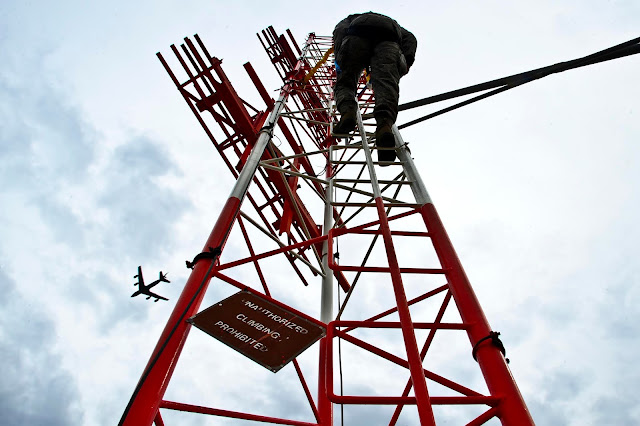A320
Bad Weather
DA
DH
Glideslope
ILS
Instrument Landing Systems
Localizer
Low visibility
RVR
VIDP
Instrument Landing System
How Airplanes land in Low Visibility and Bad Weather?
Have you ever wondered how pilots are able to land easily even in bad weather? No matter if its raining cats and dogs or the airport are covered in thick fog, pilots land the aircraft just as if it's another routine landing. The system which assists the pilots to land in such conditions is called "Instrument Landing System" or commonly known as "ILS".
Instrument Landing System
Did you know, the first ILS was set up at the Berlin Tempelhof Airport (EDDI) in the year 1932.
As mentioned above, the ILS uses 2 radio signals which are independent subsystems to provide vertical and horizontal guidance. The system that provides vertical guidance is called "Glide Slope" and that provides horizontal guidance is called "Localizer"
Glide Slope (GP)
The glide slope is a radio signal which provides vertical guidance during an ILS Approach. The Glide Slope guides the pilot to ensure that the aircraft follows a "glide path" which is approximately 3 degrees above ground and safely reach the touchdown zone of the runway. The Glide Slope has an operating frequency range of 329 Mhz to 335 MHz and the transmitter is located between 750 and 1,250 feet from the approach end of the runway and is offset 250 to 650 feet from the runway centerline
 |
| Glideslope antenna |
Fun Fact: A standard glide path angle is 3 degrees horizontally but London City Airport has a glide path angle of 5.5 degrees!
Localizer (LLZ) :
The Localizer is a radio signal which provides horizontal guidance during ILS Approach. It guides the pilot to ensure that the aircraft is aligned with the center line of the runway. The Localizer has an operating range of 108Mhz to 112 MHz. The localizer has an antenna which is installed at the far end of the runway so that the center of the antenna is in line with the center line of the runway.
 |
| Localizer |
Runway Visual Range (RVR)
The range over which the pilot of an aircraft on the center line of a runway can see the runway surface markings or the lights delineating the runway or identifying its center line. (According to ICAO Annex 6)Decision Height (DH)
The Decision Altitude (DA) or Decision Height (DH) is a specified altitude or height in the Precision Approach or approach with vertical guidance at which a Missed Approach must be initiated if the required visual reference to continue the approach has not been established.(According to ICAO Annex 6) [1]
ILS Categories
CAT 1 - DH > 200ft | RVR >1800ftCAT 2 - DH = 100 - 200 ft | RVR > 1200ft
CAT 3A - DH < 100ft | RVR > 700ft
CAT 3B - DH < 50ft | RVR > 150ft - 700ft
CAT 3C - No Limit
You must be wondering that even though many airports have such sophisticated systems yet why does fog disrupts so many flights and cause delay. The answer is even though the airport is equipped with the ILS, not all pilots are trained to land in low visibility. This training is very intensive and expensive Imagine learning to drive a car blindfolded!
Autoland
Most of the modern jetliners can Autoland. "Autoland" term is used when the autopilot approaches, flares and lands the airplane on its own without any pilot's intervention. Usually, Autoland is performed in very low visibility where the airports are equipped with ILS 3+ category. Sometimes airplanes Autoland to maintain the currency (accuracy) of the onboard computer systems. If the autoland systems lose their accuracy prior decision height, an error message is displayed on the Primary Flight Display and then the pilots either take the decision to continue the approach as an ILS CAT 2 approach or if the weather conditions aren't suitable then they discontinue the approach and land at the planned alternate airport.Enjoy a video of low visibility CAT 3B cockpit View
References :
1. ICAO Annexure 6
Picture Credits :
1. RF Wireless World
2. Wikimedia Commons
Thanks for reading!
Suggested article: How pilots handle mid-air engine failure?







